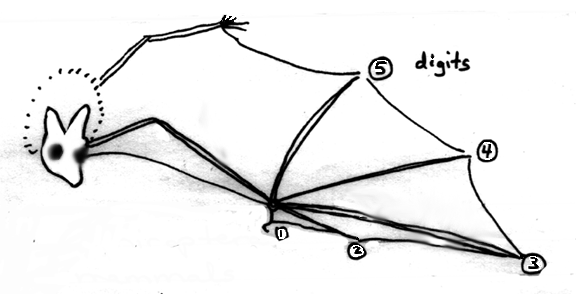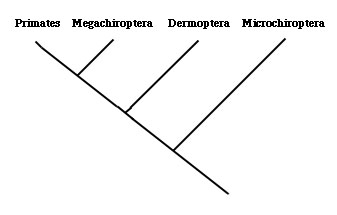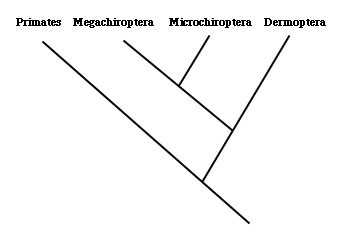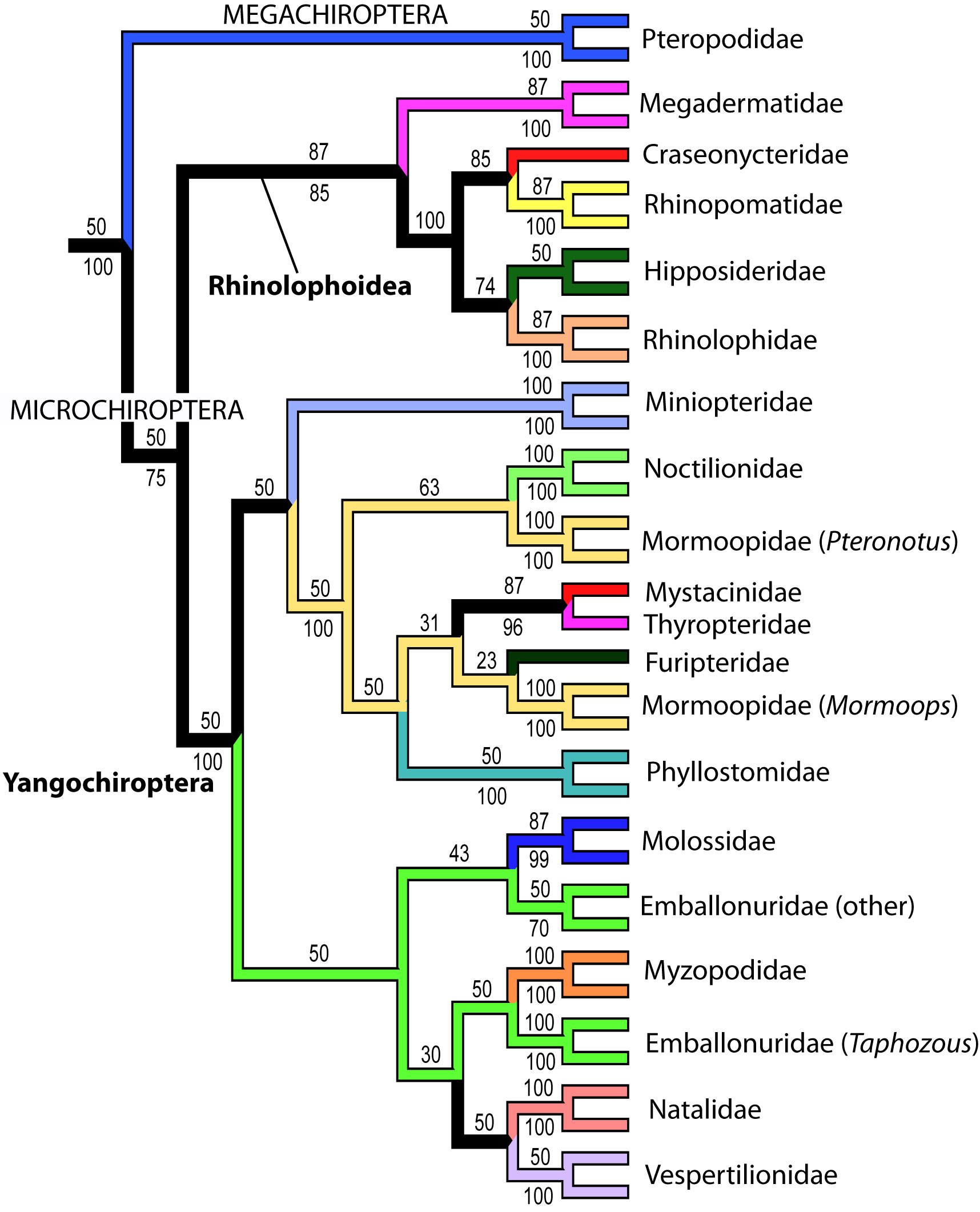

| Common name | bats |
| # of Suborders | 2 (Megachiroptera, Microchiroptera) |
| # of Genera | 168 |
| # of Species | >920 |
| Distribution | worldwide, except polar regions and a few oceanic islands |

| Megachiroptera | Microchiroptera |
|---|---|
| 1 family (Pteropodidae) | 17 families |
| Generally large | Generally smaller |
| Big eyes, little ears with no tragus | Little eyes, big ears with tragus often well-developed |
| No nose or facial ornamentation | Nose and facial ornamentation often present |
| Tail and uropatagium usually absent | Tail and uropatagium often present |
| Unmodified cervical vertebrae; head held ventrally during roosting | Modified cervical vertebrae; head held dorsally during roosting |
| Navigate using vision (only 1 species echolocates) | Navigate using echolocation |
| Don't hibernate or undergo torpor | Many hibernate or undergo torpor |
| Old World | Worldwide |




| Common name | fruit bats |
| Distribution | Africa, S.E. Asia (tropical) |
